

Roofing is the top covering of a building, including all materials and constructions that support it. It provides protection against extreme temperatures, weather, sunlight, and wind, and is an important part of a building's envelope. It is an important part of the overall structure of the building. However, there are many different types of roofing. The following sections will explore some of the common types and explain how they are used in different situations. A good roof can add value to a home and keep its occupants protected and comfortable.
Roofing requires physical strength. You should not be afraid of heights, and you should also not be afraid of climbing ladders. Practice climbing a ladder and carrying a bundle of shingles. If you don't want to hurt yourself, you may want to hire someone to do it for you. Choosing a professional can help you save money in the long run. Remember to research the right type of roofing for your home so you don't end up with a substandard roof.
Choosing the right roofing material for your project can be tricky. Thankfully, there are many options. Plastic roofing membranes are a popular choice, but they can be difficult to come by because of shortages in raw materials and truck capacity. For this reason, it is important to find a reliable roofing material for your home. A good way to determine the size you need is to divide your house's roof area by the size of the felt roll. You should also allow for some waste, so that you don't run out of felt.
Roofing also requires a lot of physical strength. It's important to not be afraid of heights, and you should be comfortable with heights. You should also be sure that you don't have a fear of heights, as you'll have to climb ladders and carry a bundle of shingles. It can be a daunting task, so you should be confident before you begin. You should also know that it's best to have someone else do it.If you need to replace an old roof, the first step is to install a three-ply roofing system. The base sheet is made of 43-pound felt and should be installed at the lowest point of the roof. It should be securely fastened using cap nails. These nails should be positioned at intervals of six to eight inches. Afterwards, the final layer should be covered with the shingles you've chosen. During the re-roofing process, you should follow all applicable safety and building codes.
The first row of shingles should be applied over the low end of the roof. The shingles should be placed parallel to the slope and extend three inches beyond the edges. After that, a row of shingles should be applied over the top of the lower sheet. Once this is done, the entire roof can be covered. The next row of shingles should be installed over the top sheet. While the first row of shingles is usually the most visible, they must be reapplied to the entire roof.

Roofing is the process of covering a building or structure with materials and constructions. The roof provides a building with protection from the elements, including sunlight, extreme temperatures and winds. It is an important part of the building envelope, and it's also very important to keep the environment clean and safe. If you don't have a roof, you may not realize that you need it! Read on for more information about roofing and how it can help you.
Roofing covers the top of a building or structure, and it protects it from the elements. Depending on the style, it can be flat, pitched, vaulted, or domed. It can be a combination of different types of roofs, and it's possible to combine more than one type of roof. The type of roof you choose is ultimately determined by aesthetic and technical considerations, but you can't go wrong with a classic shingled roof.
Whether you want a modern roof or a traditional sod roof, there are many options available. There are also many modern options for roofing, such as the sod and cut turf roofs. The latter is often used to "green" the Earth. Plants and soil on the roof act as living insulation and help to moderate the temperature of the building. Adobe roofs, on the other hand, are typically made from clay mixed with a binding material, such as animal hair or straw. These types of roofs are most common in areas with little or no rainfall.
The best roofing system will depend on your local climate. If you live in an area with heavy rain, you should use a water-resistant roof, such as a metal or composite roof. If you have a roof that will be exposed to the elements, it's a good idea to make sure it's not leaking. That way, you won't have to worry about ice or snow accumulating on your roof.
Another option for roofing is a metal roof. Metal roofs are more expensive than other types of roofing, but they offer several advantages. They are durable and attractive and can last for decades, so they're a good choice if you live in an area that experiences extreme weather. However, metal roofs require professional installation. A licensed contractor can help you with this. Moreover, you'll be able to get a warranty, which means that you'll be protected from any unforeseen damages.
The first line of defense is the shingles. Shingles protect a home from wind, but they can also let water in. As such, it's important to consider a roof's durability and the type of materials it's made of. This way, your home will stay safe, and you won't have to worry about the elements. If you're worried about a leak, you'll be able to see any damage and make the necessary repairs quickly.

The roof of a building covers the top and protects it from the weather. Different types of roofs can have different shapes and styles and are made of different materials. Some types of roofs are flat, while others have a pitched or vaulted design. These types of roofs may have several variations, and the type of roof you choose will depend on aesthetics, economics, and technical requirements. Read on to learn about the various types of roofing.
Roofing requires a lot of physical strength. You should be physically fit and not fear heights. You should be able to climb a ladder. If you are not sure about your heights, you can try to climb a ladder and carrying a bundle of shingles. Once you are confident about your strength, you can begin the roofing process. Once you have obtained a permit, you can begin to install your roof. Make sure that you follow all local building codes and are safe to use.
You should be physically fit. Roofing requires a great deal of physical strength. You should be able to climb a ladder, so make sure you are not afraid of heights. If you are concerned about falling, try carrying a bundle of shingles. A good roof should have a protective coating. You should also know how to work with a torch. You can use a torch to melt asphalt and bitumen. Once you have successfully installed your new roof, you can now lay your shingles.
Roofing is an exciting and challenging task that requires physical strength. It is essential to have confidence in yourself and don't be afraid of heights. You should also be physically fit so that you can safely climb the ladder and carry a bundle of shingles. If you're scared of heights, don't take this task on without proper training. Once you are confident about your physical ability, you'll be able to handle the work.
Roofing membranes are typically made of two layers. Typically, the first layer of shingles is a fiberglass base sheet. It is made of 43 pounds of felt and is secured with cap nails. Generally, nails should be placed every six inches. Ensure that the underlayment is properly aligned with the fascia and roof before nailing it. You may also want to add a self-stick underlayment to the bottom of the roof.
The roof of a house is composed of several layers. A two-ply membrane is a waterproof membrane that covers a roof's uppermost layers. The second layer is made of a thin layer of asphalt that protects the lower layers. During the installation process, you should use a foam adhesive to prevent moisture from entering the underlayment. During the application process, you will need to place the membrane on the roof.
Member Spotlight
Southern Roofing Systems of Saraland
3424 Forest Ridge Ct
Saraland, AL 36571
251-250-3291
https://southernroofingsystems.com/locations/saraland-roofing-contractors
https://goo.gl/maps/stZv5UpGTjPwz8EG8
Commercial roofing companies employ a sales team who is friendly and knowledgeable about the project. They should be willing to answer your questions and provide details about the project.
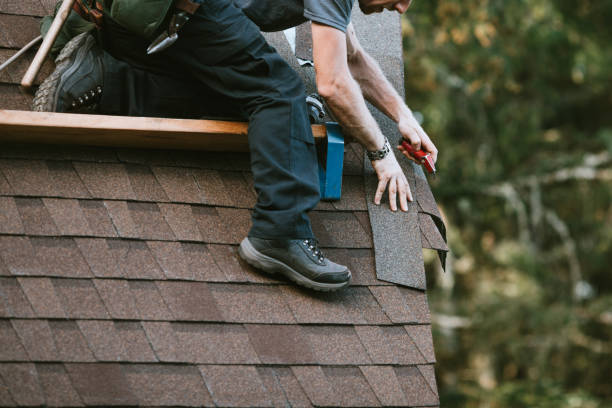
Roofing is the top covering of a building, including all materials and constructions that support it. It provides protection against extreme temperatures, weather, sunlight, and wind, and is an important part of a building's envelope. It is an important part of the overall structure of the building. However, there are many different types of roofing. The following sections will explore some of the common types and explain how they are used in different situations. A good roof can add value to a home and keep its occupants protected and comfortable.
Roofing requires physical strength. You should not be afraid of heights, and you should also not be afraid of climbing ladders. Practice climbing a ladder and carrying a bundle of shingles. If you don't want to hurt yourself, you may want to hire someone to do it for you. Choosing a professional can help you save money in the long run. Remember to research the right type of roofing for your home so you don't end up with a substandard roof.
Choosing the right roofing material for your project can be tricky. Thankfully, there are many options. Plastic roofing membranes are a popular choice, but they can be difficult to come by because of shortages in raw materials and truck capacity. For this reason, it is important to find a reliable roofing material for your home. A good way to determine the size you need is to divide your house's roof area by the size of the felt roll. You should also allow for some waste, so that you don't run out of felt.
Roofing also requires a lot of physical strength. It's important to not be afraid of heights, and you should be comfortable with heights. You should also be sure that you don't have a fear of heights, as you'll have to climb ladders and carry a bundle of shingles. It can be a daunting task, so you should be confident before you begin. You should also know that it's best to have someone else do it.If you need to replace an old roof, the first step is to install a three-ply roofing system. The base sheet is made of 43-pound felt and should be installed at the lowest point of the roof. It should be securely fastened using cap nails. These nails should be positioned at intervals of six to eight inches. Afterwards, the final layer should be covered with the shingles you've chosen. During the re-roofing process, you should follow all applicable safety and building codes.
The first row of shingles should be applied over the low end of the roof. The shingles should be placed parallel to the slope and extend three inches beyond the edges. After that, a row of shingles should be applied over the top of the lower sheet. Once this is done, the entire roof can be covered. The next row of shingles should be installed over the top sheet. While the first row of shingles is usually the most visible, they must be reapplied to the entire roof.

Roofing is a crucial component of any building and is used to protect the building's interior. There are many types of roofs. The most common is a pitched roof, which is also known as a gable roof. The gable roof originated in ancient and has been a staple of domestic architecture. Hip-roofs have two sloped ends and were once common. Today, these types of roofs are commonly seen on American houses.One of the first steps in roofing a home is to measure the area. Roofing felt is sold in rolls. The label will tell you the size of the roll and how much you will need to buy. Divide the roof's surface area by the number of felt rolls. You may need to purchase extra shingles if the amount you need is higher than the actual roof area.
For safety reasons, it is important to calculate the amount of shingles you will need.Once you know the area of your roof, you'll need to measure the room's height. You'll need to use a measuring tape to measure the height of the roof and determine the length of each course. Roofing felt comes in rolls and is usually sold in rolls of one square meter. To find the size you need, divide the roof's surface area by the number of felt rolls. Be sure to add 10% extra to allow for waste.When purchasing roofing felt, make sure you know the area it covers. The labels will tell you how much felt each roll contains. Divide the roof's surface area by the number of rolls. Remember to allow at least 10% extra so you don't have to return any shingles. If your house has several levels of old shingles, you'll need to buy more roofing material than you need. And if you don't need a lot, you can save money by hiring someone who can do it for you.Before laying the first course of shingles, make sure the underlayment is installed properly. It is important to use a 28-gauge metal flashing. It must be corrosion-resistant and stain-resistant.
Then, install the ice and water protector membrane. The shingles must overlap by at least five inches to avoid leaks and damage from the wind. However, if the shingle tabs are too small, a seam will form.The drip edge is the last layer to be installed. Begin at the bottom of the gable and work up the roof. The drip edge should overlap by a few inches. You can use tin snips to cut the drip edge to fit. During the installation process, the underlayment will be applied to the roof. Once the underlayment is in place, you can apply the roofing shingles. As soon as you've finished the underlayment, you can begin the installation of the drip line.

The roof of a building covers the top and protects it from the weather. Different types of roofs can have different shapes and styles and are made of different materials. Some types of roofs are flat, while others have a pitched or vaulted design. These types of roofs may have several variations, and the type of roof you choose will depend on aesthetics, economics, and technical requirements. Read on to learn about the various types of roofing.Roofing requires a lot of physical strength. You should be physically fit and not fear heights. You should be able to climb a ladder. If you are not sure about your heights, you can try to climb a ladder and carrying a bundle of shingles. Once you are confident about your strength, you can begin the roofing process. Once you have obtained a permit, you can begin to install your roof.
Make sure that you follow all local building codes and are safe to use.You should be physically fit. Roofing requires a great deal of physical strength. You should be able to climb a ladder, so make sure you are not afraid of heights. If you are concerned about falling, try carrying a bundle of shingles. A good roof should have a protective coating. You should also know how to work with a torch. You can use a torch to melt asphalt and bitumen. Once you have successfully installed your new roof, you can now lay your shingles.Roofing is an exciting and challenging task that requires physical strength. It is essential to have confidence in yourself and don't be afraid of heights. You should also be physically fit so that you can safely climb the ladder and carry a bundle of shingles.
If you're scared of heights, don't take this task on without proper training. Once you are confident about your physical ability, you'll be able to handle the work.Roofing membranes are typically made of two layers. Typically, the first layer of shingles is a fiberglass base sheet. It is made of 43 pounds of felt and is secured with cap nails. Generally, nails should be placed every six inches. Ensure that the underlayment is properly aligned with the fascia and roof before nailing it. You may also want to add a self-stick underlayment to the bottom of the roof.The roof of a house is composed of several layers. A two-ply membrane is a waterproof membrane that covers a roof's uppermost layers. The second layer is made of a thin layer of asphalt that protects the lower layers. During the installation process, you should use a foam adhesive to prevent moisture from entering the underlayment. During the application process, you will need to place the membrane on the roof.
Member Spotlight
Southern Roofing Systems of Fairhope
20068 Pecan Trce
Fairhope, AL 36532
251-280-1671
https://southernroofingsystems.com/locations/fairhope-roofing-contractors
https://goo.gl/maps/iQogokUnomvJMKmX7
Commercial roofing companies employ a sales team who is friendly and knowledgeable about the project. They should be willing to answer your questions and provide details about the project.
.jpg)
A roof is the topmost part of a home. Its integrity is vitally important to maintain it in a weather-prone environment. To learn more, continue reading! Here are some tips that will help you choose a suitable material for your home.
The first thing to consider is the size of the roof. Typically, roofing felt is sold in rolls. When choosing a felt roll, divide the area of the roof by the measurement. You can always add a bit of extra to accommodate for waste. If you need a large amount of felt, purchase one that is twice as large as the area of the roof. You should also allow for the ten percent wastes. Adding a little extra to your roof is always a good idea.
A roof's shape is crucial. The shape of the roof will determine how much roofing material you need. A flat roof can weigh less than an angled roof. A pitched roof is a popular choice for low-roofed buildings. The flat roof is the most common type of roofing, while a domed or vaulted one is more common in tropical areas. Regardless of the size of your roof, it is essential to make sure it is made of a material that is suited for your needs.
Whether you're aiming to cover a flat roof or a complex one, a roofing system should provide a level of protection from the elements. A roof can be flat, domed, or pitched. In some cases, the forms are combinations of different styles. Technical considerations, aesthetics, and cost will determine which type of roof is best for your home. There are also several types of roofs to choose from, so you should take your time when selecting a material.
The durability of the material chosen for your roofing system depends on the climate, the availability of materials, and the location. If the climate is cold, the shingles are not likely to adhere well to each other, and wind damage can result. However, if the temperatures are warm enough, the adhesive strips of the shingles will seal and be more resistant to the elements. The ice and water underneath the shingles becomes softer, which can cause problems down the road.
When choosing a roofing system, it's important to choose the correct materials. The right type of roof material will protect your home against wind. But you should also be aware of the factors that affect the durability of your roofing system. In some cases, a roof may not be waterproof, so be sure to choose a waterproof one. You'll be glad you did. A quality roof is one that will last for a long time.
.jpg)
Roofing is a process that covers the top of a building, protecting it from weather. Roofs can be flat, pitched, vaulted, domed, or a combination of any of these. Different types of roofs have different uses and are determined by aesthetics, economics, and technical considerations. A skilled roofing contractor will understand all of these factors and recommend the best option for your building. If you're looking for a new roof, here are a few tips.
First, you'll need to purchase some roofing materials. Usually, roofing materials come in a wide range of prices. Once you've chosen a color and material, the next step is choosing a contractor. Generally, you should hire a professional to do the work. Depending on the type of roof, the process will take a few weeks. The duration of the job will depend on how complex your project is. You can learn the basics of roofing by looking at a few tips.
Roofing requires physical strength. If you're afraid of heights, you might not be the right choice for this type of project. A ladder will be necessary, so you shouldn't be afraid of heights. Having the right tools will also help you avoid injuries. Make sure you're strong enough to carry the bundle of shingles when you're not wearing protective gear. Getting a permit is another essential step in roofing a home.
When choosing a contractor for roofing, keep these things in mind. It's best to hire someone with experience and knowledge. While roofing isn't an easy job, you will find that it's an enjoyable project when you're finished. And remember that it doesn't take a lot of money. You'll also enjoy a great deal of freedom and flexibility. So, go ahead and choose the best roofing contractor. The results will be worth it.
A proper roofing job requires the right materials. A quality shingle will prevent water from leaking into the building. Whether it's asphalt or a composite roof, both are durable and waterproof. Ensure that shingles are properly installed. Regardless of the size of your roof, you'll need a good tarred roof. Moreover, it's important to check for cracks and holes. During a roof repair, you can hire a contractor with the same knowledge and experience as you would if you were doing it yourself.
Before installing roofing shingles, make sure to install an underlayment. The underlayment protects the shingles from wind-blown rain and ice dams. To prevent leaks and snow from accumulating on the roof, use a self-stick ice and water underlayment. Its underlayment is a durable, waterproof layer that should last for several years. Ultimately, it will protect your house and prevent it from getting damaged.

There are three basic types of roofing. Depending on the climate and the style of the home, a flat roof may be the best choice for your home. Flat roofs are easy to climb and safer than slanted roofs. They are also more cost-effective in the right setting. And while tearing off the old roofing is often desirable, the process is faster and relatively painless. But before you hire a roofing company, you should know a few things about roofing.
One type of roofing material is called metal. It is known for its durability and requires less seasonal maintenance. However, if you plan to sell your home in a few years, a metal roof may not be the best choice. If you're not planning to move out of your home for a few years, the investment may not be worth it. You will also need to account for the cost of materials and labor when estimating your roof's lifespan.
When choosing a roofing material, be sure to choose a durable material. Some materials are more durable than others, and are ideal for extreme climates. For example, thermoplastic membranes are resistant to tears and punctures. They're also effective at combating bacterial growth and standing water, both of which can decrease the lifespan of a roofing material. Lastly, a well-constructed roof will be much more energy-efficient and less expensive to maintain.
A metal roof can be very costly, but the benefits of having a metal roof are well worth the cost. It can cost anywhere from $15 to $60 per square foot and is almost always cheaper than a traditional roof. But it can cost you a few thousand dollars more in the long run. The downside is that it may not be worth it for you to live under a metal roof, but it may be a good choice for a long-term investment.
While there are two types of roofing materials, the most common is asphalt roll-roofing. This is the simplest and cheapest option. It uses asphalt in rolls, with a protective granule top layer on top. Then the rubber membrane, which is similar to a large inner tube, is held down by mechanical fasteners. It can be held down by glue or rock garden ballast. While it does have some disadvantages, it has the highest overall resistance.
There are different types of roofing materials available. For instance, a metal roof may be more expensive up front, but the material will last longer than a regular asphalt roof. It is a good idea to check the warranty on your roofing material before you purchase it. A roof is not a good investment if it is not installed properly. The proper installation will help prevent the risk of leaks and other issues. This is an essential aspect of any building project.
Member Spotlight
Southern Roofing Systems of Foley
118 W Walnut Ave
Foley, AL 36535
251-244-1051
https://southernroofingsystems.com/locations/foley-roofing-contractors
https://goo.gl/maps/JZYR6v6aeCMXeG839
Commercial roofing companies employ a sales team who is friendly and knowledgeable about the project. They should be willing to answer your questions and provide details about the project.

The main differences between flat roofing and slanted roofing are the types of materials and their installation processes. Flat roofs are more stable, easier to climb, and less expensive than slanted roofs. They also have a more attractive look. And they can be quicker to install and replace. Whether you need to replace a single layer of roofing or the entire roof, this guide will help you decide the best type of material for your project.
A flat roof is the most common type of roof and is the least expensive. It's also the most common and provides a good seepage barrier. Felts, however, are heavy and require special tools to install. They should be purchased based on the square footage of your roof. Roofing companies will be able to recommend the best type of roofing material for your project. In addition, they can help you decide if a green roof is a better option for your home or business.
A roof is a structure's top cover, protecting the inside from the outside. Roofing materials can be flat or pitched, vaulted, or domed, or a combination of forms. The type of roof you choose is a matter of aesthetics and economics. If you're installing a green roof, make sure you consider the environment and your budget before you purchase roofing materials. Just like with any other material, you should check the manufacturer's warranty to ensure you're not paying for a faulty roof.
When choosing roofing materials, take into account the climate in your area. A green roof has excellent insulating qualities. Depending on the type of green roof material you choose, you may want to go with a greener option. The use of cut-turf roofs and sod roofs has become increasingly popular as a way to "green" the Earth. The soil and vegetation in these types of roofs act as living insulation, regulating the temperature of the building inside.
Choosing a green roofing material will save you money and energy. A green roof is much more durable than a traditional one. It will last for a long time. Moreover, it will protect your home from wind and cold weather. With the proper materials and installation, your roof will last for a long time. And it will increase the value of your property. If you choose to install a metal roof, you should be aware of the following safety precautions:
Choosing a green roof material is important. Using a green roof is good for the environment. It will be environmentally friendly too. The most popular choice for a green roof is a tarpaulin-covered asphalt. This material is a renewable resource and will not degrade over time. Besides saving money, the eco-friendly roofing material will also improve the aesthetic value of your property. It will also enhance the overall look of your home.

Roofing is a crucial part of the building process. Without it, your home will not be safe. Your roof must be well-constructed to withstand the elements. You should also be aware of possible problems, including ice dams. These are caused when melted snow runs down the roof to the eaves and freezes again. These force water back up underneath the shingles and cause damage. Proper maintenance is vital to your home's safety and appearance.
Getting the right materials is the first step in the roofing process. Regardless of whether you are replacing a single layer or an entire house, a proper roof is made up of many layers. Choosing a material that matches your house's style will help you create a new look that will last for a long time. In addition, you should be sure that your roofing contractor uses materials that are fire resistant. This will ensure that your home is safe for future generations.
If you're a beginner, roofing can be challenging. You will need to be physically fit and be able to climb a ladder. Make sure you're not afraid of heights. Before you begin, climb up a ladder and carry a bundle of shingles. A professional should be able to provide all the tools and training necessary for the job. During this process, you'll learn how to install the proper nails.
The second step in a roof is to properly install flashing. This protects the shingles from any weather. Unlike asphalt shingles, these shingles are non-leaching. The only thing that's important when installing shingles is to have the proper ventilation. The proper installation will ensure that you're safe and that your roof will last for years. This method requires a thorough preparation, but you won't regret the decision once you're finished.
In addition to the types of shingles, there are several other types of roofs. Flat roofs require big sheets of roofing material, such as cloths impregnated with asphalt. These types of roofs are more durable than those made of wood. In addition to shingles, you can also install shingles. Once you've completed the underlayment, you'll need to install the drip edge. You'll want to overlap the drip edge by several inches as you work your way up the roof. You can use tin snips to cut it to size.
When it comes to flat roofs, it's important to consider the type of roof that you have. A flat roof is often the most cost-effective option, but it requires less maintenance. If you're installing a new roof for the first time, you'll need to hire a contractor to do the work. Fortunately, there are some DIY roofing guides online, and the process doesn't have to be difficult. If you know how to do it, you can easily create a beautiful home that will last for years.

Roofing is a major topic in construction and is an essential element in building envelopes. The roof is the top covering for a building and includes all the materials and constructions that support it. It is an essential element of a building's exterior and is responsible for protecting its occupants from extreme temperatures, sunlight, and wind. The roof also provides aesthetic appeal to the building. Roofing equipment can become frozen in cold weather. Many roofing crews carry around ten nail guns on a job, and they don't want a halt to their work. New nail guns won't last very long during the winter, but a second-hand gun can last the whole spring, summer, and fall. Depending on the conditions, a second-hand roof may be a good investment. The insulating qualities of a second-hand roof can be worth the investment.
Roofing felt is sold in rolls. Felts contain specific amounts of material. You should divide the roof's area by the number of rolls. You should also make sure to allow at least 10% for waste. For a good, lasting roof, you should purchase the same materials. If you don't need a brand-new roof right now, roofing felt is a great option. However, it is important to check the label before purchasing it.
The best way to ensure quality is to compare prices. The lowest price doesn't necessarily mean the highest-quality roof. Roofing costs money and the best choice is to find a balance. A top-quality roof shouldn't be too expensive, but don't choose the cheapest one. After all, the old saying "you get what you pay for" rings true when it comes to construction, and it is important to choose a reputable roofing company with a good reputation.
The earliest roofs were constructed from wood or animal parts. During the early stages of human civilization, early man lived in caves, where he could build rudimentary dwellings with no roofs. In the early days, he slept on the rooftop under a cloth canopy. But today, roofing is a vital aspect of building a building's structure. It provides a roof for houses and buildings.
During the early stages of civilization, man lived in caves. Later, he started constructing temporary shelters in the open. These rudimentary structures were used for early human settlements. It is still believed that they slept under the stars. But later, coal tar roofing emerged as a common material in the early twentieth century. This material was soon replaced by asphalt shingles. This modern roofing material is a good example of a historical era in which man first started to settle.
Member Spotlight
Southern Roofing Systems of Daphne
107 S Windgate Cir
Daphne, AL 36526
251-278-2378
https://southernroofingsystems.com/locations/daphne-roofing-contractors
https://goo.gl/maps/ufXHgT7zK2DZJZ7F9
Commercial roofing companies also provide warranties and dependable service. The owner is responsible for maintaining the integrity of the roof, and a poorly constructed roof can lead to damage and a loss of business.
.jpg)
There are many types of roofing. The most common types are sloping and flat. These types of roofs are commonly used in hot and arid climates, and drainage of water off the roof is of secondary importance. Roofing materials have long been used to protect structures, but only recently have they been widely adopted. The use of new waterproof materials and structural steel and concrete made flat roofs a practical option. In the decades since, flat roofs have become the most common type of roof for commercial buildings, while also being used on residential structures.
Other types of roofs include thatch and gravel. These materials are both environmentally friendly and can be found in a variety of colors and styles. While both asphalt and steel are relatively inexpensive, steel roofing is a better choice in the long term. It will last much longer and be more energy efficient than asphalt or wood, saving you money over time. It may also not need to be replaced for the rest of your life. In addition, these materials are also durable and cost less than other options.
The most common material for roofing is concrete. Using concrete and fibers, T-beams can span up to 100 feet (30 m). The same is true for hollow-core slabs, which are often used for a flush ceiling. And finally, a combination of joists and planks is the most common roofing material. It is composed of prestressed joists and pre-seamed planks, which span from thirty feet (9.1 m) to 60 feet (18 m).A metal roof can be quite expensive, and the price varies depending on the material. In general, the price of a metal roof is anywhere from $15 to $60 per square foot. Regardless of the material, you will be spending about two to three times as much money as you would for traditional materials. In the long run, you will save money by choosing a metal roof, and it's worth it if you plan to live in your home.
Choosing the right type of roofing is important for both practical and aesthetic design. There are several different types of roofing. Essentially, there are two main types: flat roofs and pitched roofs. For those who want a flat roof, it will be a good idea to opt for one with the least amount of materials. Despite the advantages, flat roofs are a bit more expensive to install and maintain than pitched ones. They are also prone to leakage, which means that they will require regular repairs.
Despite its high cost, a metal roof is an environmentally conscious choice. It contains at least 25 percent recycled materials. As an added benefit, it can be installed over an existing asphalt roof. In addition to being environmentally friendly, metal roofs are also lightweight and can be installed over an old roof. This means that you'll save money and feel confident that your house is protected. It also helps you keep your home looking beautiful. If you don't want to spend more, consider a metallic roofing.
.jpg)
Roofing is the top covering of a building, including all materials and constructions that support it. It provides protection against extreme temperatures, weather, sunlight, and wind, and is an important part of a building's envelope. It is an important part of the overall structure of the building. However, there are many different types of roofing. The following sections will explore some of the common types and explain how they are used in different situations. A good roof can add value to a home and keep its occupants protected and comfortable.
Roofing requires physical strength. You should not be afraid of heights, and you should also not be afraid of climbing ladders. Practice climbing a ladder and carrying a bundle of shingles. If you don't want to hurt yourself, you may want to hire someone to do it for you. Choosing a professional can help you save money in the long run. Remember to research the right type of roofing for your home so you don't end up with a substandard roof.
Choosing the right roofing material for your project can be tricky. Thankfully, there are many options. Plastic roofing membranes are a popular choice, but they can be difficult to come by because of shortages in raw materials and truck capacity. For this reason, it is important to find a reliable roofing material for your home. A good way to determine the size you need is to divide your house's roof area by the size of the felt roll. You should also allow for some waste, so that you don't run out of felt.
Roofing also requires a lot of physical strength. It's important to not be afraid of heights, and you should be comfortable with heights. You should also be sure that you don't have a fear of heights, as you'll have to climb ladders and carry a bundle of shingles. It can be a daunting task, so you should be confident before you begin. You should also know that it's best to have someone else do it.
If you need to replace an old roof, the first step is to install a three-ply roofing system. The base sheet is made of 43-pound felt and should be installed at the lowest point of the roof. It should be securely fastened using cap nails. These nails should be positioned at intervals of six to eight inches. Afterwards, the final layer should be covered with the shingles you've chosen. During the re-roofing process, you should follow all applicable safety and building codes.
The first row of shingles should be applied over the low end of the roof. The shingles should be placed parallel to the slope and extend three inches beyond the edges. After that, a row of shingles should be applied over the top of the lower sheet. Once this is done, the entire roof can be covered. The next row of shingles should be installed over the top sheet. While the first row of shingles is usually the most visible, they must be reapplied to the entire roof.

The roof of a building covers the top and protects it from the weather. Different types of roofs can have different shapes and styles and are made of different materials. Some types of roofs are flat, while others have a pitched or vaulted design. These types of roofs may have several variations, and the type of roof you choose will depend on aesthetics, economics, and technical requirements. Read on to learn about the various types of roofing.
Roofing requires a lot of physical strength. You should be physically fit and not fear heights. You should be able to climb a ladder. If you are not sure about your heights, you can try to climb a ladder and carrying a bundle of shingles. Once you are confident about your strength, you can begin the roofing process. Once you have obtained a permit, you can begin to install your roof. Make sure that you follow all local building codes and are safe to use.
You should be physically fit. Roofing requires a great deal of physical strength. You should be able to climb a ladder, so make sure you are not afraid of heights. If you are concerned about falling, try carrying a bundle of shingles. A good roof should have a protective coating. You should also know how to work with a torch. You can use a torch to melt asphalt and bitumen. Once you have successfully installed your new roof, you can now lay your shingles.
Roofing is an exciting and challenging task that requires physical strength. It is essential to have confidence in yourself and don't be afraid of heights. You should also be physically fit so that you can safely climb the ladder and carry a bundle of shingles. If you're scared of heights, don't take this task on without proper training. Once you are confident about your physical ability, you'll be able to handle the work.
Roofing membranes are typically made of two layers. Typically, the first layer of shingles is a fiberglass base sheet. It is made of 43 pounds of felt and is secured with cap nails. Generally, nails should be placed every six inches. Ensure that the underlayment is properly aligned with the fascia and roof before nailing it. You may also want to add a self-stick underlayment to the bottom of the roof.
The roof of a house is composed of several layers. A two-ply membrane is a waterproof membrane that covers a roof's uppermost layers. The second layer is made of a thin layer of asphalt that protects the lower layers. During the installation process, you should use a foam adhesive to prevent moisture from entering the underlayment. During the application process, you will need to place the membrane on the roof.
Member Spotlight
Southern Roofing Systems of Spanish Fort
34227 Paisley Court Avenue
Spanish Fort, AL 36527
251-220-8496
https://southernroofingsystems.com/locations/spanish-fort-roofing-contractors
https://goo.gl/maps/3Qgjh4Kkk3nH82RL9
Commercial roofing companies employ a sales team who is friendly and knowledgeable about the project. They should be willing to answer your questions and provide details about the project.
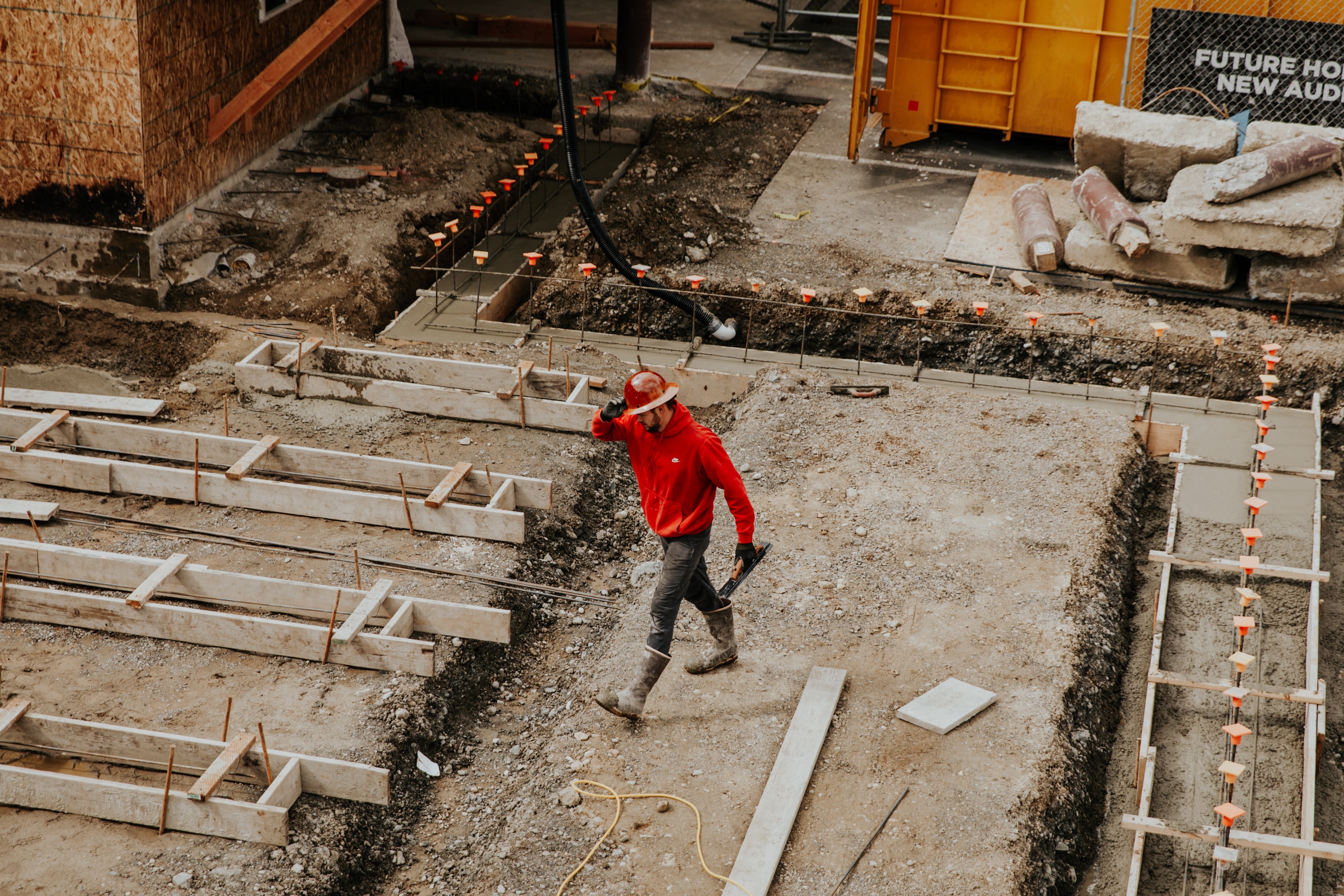
Roofing is the top covering of a building. It comprises all the materials and constructions that support it and provide protection from sunlight, extreme temperatures, wind, and weather. Roofing is an important part of the building envelope and helps to ensure the structural integrity of a structure. It is also an essential part of modern construction. Read on to learn more about roofing. But before getting started, let's define what it is. Basically, a roof protects a structure from the elements.Roofing felt comes in rolls. The label will indicate how much area each roll contains. Divide the roof area by the number of rolls that you need, and allow at least 10% extra for waste. Several other considerations should be taken into account. The best way to calculate the amount of roofing felt to buy is to divide the total area of your roof by two. If you have a lot of waste, it's better to buy a bit more than you need.Roofing felt can be purchased in rolls. Each roll is labeled with the area it covers.
You can divide the total area of your roof by the number of rolls you need. You should also add 10% for waste. Choosing the right roofing felt depends on your budget and the size of your roof. When purchasing roofing, make sure you do a thorough research and make sure you know what you need. If you are not sure, ask a professional to help you out.Besides providing good insulation, some roofing materials can help you save money. For example, cut turf roofs are considered green roofs. Moreover, they are considered a sustainable option as they are "green". Soil and vegetation act as living insulation for a building. These roofs also moderate the temperature of the building. Adobe roofs are made of clay mixed with a binding material such as straw or animal hair and plastered on a lathe.
However, they're mainly used in areas of low rainfall.You should also consider the type of roof you want to replace. Generally, you'll want to have a new roof installed if it's more than ten years old. There are many different types of roofs, but it's best to have a professional do the work before replacing it. You'll save money and time by comparing shingles and metal. When choosing a contractor, make sure you've carefully thought through the process.Another popular roofing method is rebooting. This is a type of re-roofing, where the roofer installs a new roof over the existing one. You don't have to tear off the old roof before reroofing. This method has its advantages and disadvantages, but it's a great option if you're looking to save money and time. But the most important advantage of rerouting is that it reduces the cost and inconvenience.

Roofing materials include metal sheets, slate, concrete, and wood. There are also many types of asphalt shingles, sod, and copper roofs. Some materials are more resistant to weather and fire, such as metal. In addition, these options are often more affordable than traditional methods. Listed below are the types of roofing materials and how they work. Read on for more information! Roofing 101: Basics of Roofing and Choosing a MaterialFirst, roofing materials come in rolls. Typically, shingles are sold by the square foot. Look for the label that indicates the square feet of material in each roll. Divide the number of square feet of roof by the area of the felt roll. If there's leftover material, allow 10% for waste. The next step in constructing a roof is preparing the base for shingles. A flat roof should be prepared in advance for the final phase.
The next step in a roofing project is to lay roofing felt. This protective layer will protect the roof from the resin bleed that occurs when the roof is wet. Using roofing felt will also prevent unevenness in the final layer of shingles. Getting a roofing contractor for this job can be an expensive affair. If you're worried about falling off the roof, consult an expert. You'll be glad you did. Once you're confident, it's time to get to work.Roofing is a tough job that requires a lot of physical strength. You don't want to get hurt. You should be able to climb a ladder. Roofing felt will prevent resin bleed and will provide an extra barrier against fire. Roofing felt will also smooth the sheathing of the roof, making it easier to lay shingles over it. Once the first row of shingles is installed, the next row will be laid over the top sheet.Roofing felt is a material that contains a base material that is natural or synthetic. The protective layer is bitumen, and it repels water while allowing it to breathe.
It helps prevent leaks and moisture damage. Moreover, it ensures that water drains off the roof and prevents rot. In order to complete a roofing project, you must follow all local building codes. After completing the initial steps, it is important to adhere flashing and shingles to the roof.Before installing shingles, you need to install underlayment. Afterwards, you need to install a drip edge. Start with a drip edge and overlap a few inches as you work up the roof. Once you've finished the underlayment, you'll need to install the shingles. It's important to make sure you follow local building codes. After determining the right materials, you should ensure that you've researched your local codes.
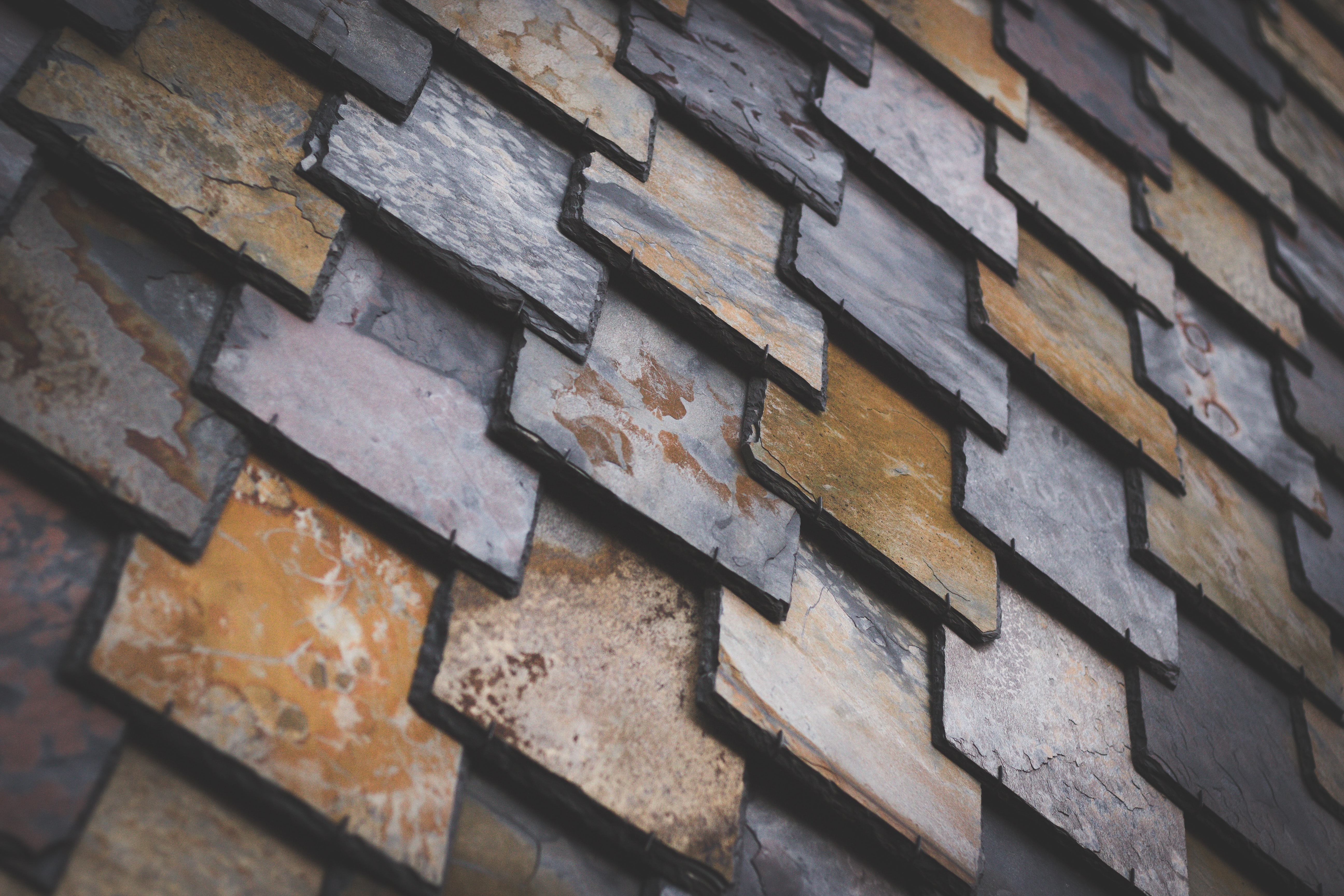
Roofing is the process of covering a building. It is made up of all materials and constructions that support it and provides a layer of protection from extreme temperature and weather conditions. It is also an important part of a building's envelope. There are many different types of roofs. The main purpose of a roof is to keep the interior of the building dry and protected. The roof also protects the interior of the building from the outside elements.There are many different types of roofs. Traditionally, a roof is a covering for a building that protects it from the elements. Roofing can be flat, pitched, vaulted, or domed.
The type of roof is determined by aesthetic and technical considerations. Here are some examples of roofs and their uses: a.- Roofs that protect against cold climates. Using a roof that is insulated can prevent water from penetrating. Whether you want a tin or copper roof, you'll need a roofing system that will keep you warm. The insulation of your home is vital, and there are many different types available. When it comes to roofing, it is important to choose a material that will protect it and the interior.- Roofing felt. Roofing felt is made of layers of asphalt or tar that protect the top layer of the roof from rain and snow. This material will protect your roof from bleed from the resin and provide additional protection from fire. Moreover, it smooths out the surface of the roof sheathing, preventing unevenness in the final layer of shingles. There are several types of roofing felt. Depending on your needs, you may need several rolls, but it is generally not necessary to buy more than you need.Roofing materials can be adapted to different climates. For example, a residential roof made of asphalt-saturated felt is a cost-effective choice. Nevertheless, it does have disadvantages. For example, in hot climates, the shingles won't adhere properly to the asphalt-saturated felt, which makes them vulnerable to ice and water.
In harsher climates, they might even tear apart. Besides that, it is very difficult to remove shingles from a flat roof.The type of material used for roofing can vary depending on climate and availability. In tropical climates, vegetation is often used for roofing. Bamboo, for example, is widely used in Southeast Asia. It is an excellent choice for homes in tropical countries. Similarly, the bark of certain trees is also an effective roofing material. All these materials are suitable for many types of roofing, whether it's residential or commercial. If you choose to use asphalt-saturated felt, you can save money on the installation process.Roofing materials are made of asphalt-based material. For commercial buildings, asphalt-based materials are preferred. Natural and synthetic materials are the most common. Among these, asphalt-based materials are cheaper than natural materials. Despite the benefits of asphalt-based roofing systems, it is important to consider the environmental impact of the products you select. For residential buildings, bitumen-based shingles can protect from heat and sunlight while preventing ice.
Member Spotlight
Southern Roofing Systems of West Mobile
2724 Old Shell Rd, Suite D
Mobile, AL 36607
2512989194
https://southernroofingsystems.com/locations/west-mobile-roofing-contractors
https://goo.gl/maps/AWmJu1WyWgSxNqMr8
Commercial roofing contractors list the materials they plan to use, and will provide documentation for the products used. Their crew will complete a project quickly and efficiently.
.jpg)
Roofing is the top covering of a building, including all materials and constructions that support it. It provides protection against extreme temperatures, weather, sunlight, and wind, and is an important part of a building's envelope. It is an important part of the overall structure of the building. However, there are many different types of roofing. The following sections will explore some of the common types and explain how they are used in different situations. A good roof can add value to a home and keep its occupants protected and comfortable.
Roofing requires physical strength. You should not be afraid of heights, and you should also not be afraid of climbing ladders. Practice climbing a ladder and carrying a bundle of shingles. If you don't want to hurt yourself, you may want to hire someone to do it for you. Choosing a professional can help you save money in the long run. Remember to research the right type of roofing for your home so you don't end up with a substandard roof.
Choosing the right roofing material for your project can be tricky. Thankfully, there are many options. Plastic roofing membranes are a popular choice, but they can be difficult to come by because of shortages in raw materials and truck capacity. For this reason, it is important to find a reliable roofing material for your home. A good way to determine the size you need is to divide your house's roof area by the size of the felt roll. You should also allow for some waste, so that you don't run out of felt.
Roofing also requires a lot of physical strength. It's important to not be afraid of heights, and you should be comfortable with heights. You should also be sure that you don't have a fear of heights, as you'll have to climb ladders and carry a bundle of shingles. It can be a daunting task, so you should be confident before you begin. You should also know that it's best to have someone else do it.If you need to replace an old roof, the first step is to install a three-ply roofing system. The base sheet is made of 43-pound felt and should be installed at the lowest point of the roof. It should be securely fastened using cap nails. These nails should be positioned at intervals of six to eight inches. Afterwards, the final layer should be covered with the shingles you've chosen. During the re-roofing process, you should follow all applicable safety and building codes.
The first row of shingles should be applied over the low end of the roof. The shingles should be placed parallel to the slope and extend three inches beyond the edges. After that, a row of shingles should be applied over the top of the lower sheet. Once this is done, the entire roof can be covered. The next row of shingles should be installed over the top sheet. While the first row of shingles is usually the most visible, they must be reapplied to the entire roof.
.jpg)
Roofing materials include metal sheets, slate, concrete, and wood. There are also many types of asphalt shingles, sod, and copper roofs. Some materials are more resistant to weather and fire, such as metal. In addition, these options are often more affordable than traditional methods. Listed below are the types of roofing materials and how they work. Read on for more information! Roofing 101: Basics of Roofing and Choosing a MaterialFirst, roofing materials come in rolls. Typically, shingles are sold by the square foot. Look for the label that indicates the square feet of material in each roll. Divide the number of square feet of roof by the area of the felt roll. If there's leftover material, allow 10% for waste. The next step in constructing a roof is preparing the base for shingles. A flat roof should be prepared in advance for the final phase.
The next step in a roofing project is to lay roofing felt. This protective layer will protect the roof from the resin bleed that occurs when the roof is wet. Using roofing felt will also prevent unevenness in the final layer of shingles. Getting a roofing contractor for this job can be an expensive affair. If you're worried about falling off the roof, consult an expert. You'll be glad you did. Once you're confident, it's time to get to work.
Roofing is a tough job that requires a lot of physical strength. You don't want to get hurt. You should be able to climb a ladder. Roofing felt will prevent resin bleed and will provide an extra barrier against fire. Roofing felt will also smooth the sheathing of the roof, making it easier to lay shingles over it. Once the first row of shingles is installed, the next row will be laid over the top sheet.
Roofing felt is a material that contains a base material that is natural or synthetic. The protective layer is bitumen, and it repels water while allowing it to breathe. It helps prevent leaks and moisture damage. Moreover, it ensures that water drains off the roof and prevents rot. In order to complete a roofing project, you must follow all local building codes. After completing the initial steps, it is important to adhere flashing and shingles to the roof.
Before installing shingles, you need to install underlayment. Afterwards, you need to install a drip edge. Start with a drip edge and overlap a few inches as you work up the roof. Once you've finished the underlayment, you'll need to install the shingles. It's important to make sure you follow local building codes. After determining the right materials, you should ensure that you've researched your local codes.
.jpg)
Roofs can be made of a variety of materials, but most are made of asphalt. These materials are the most widely used, but other types are also available. These materials are a great choice for low-sloped roofs because they are easily installed without tearing the existing roof. Listed below are some of the different types of roofs available. Read on to learn about some of the most common types of roofing. They are also great for preserving the beauty of a home.
The asphalt-based roofing is also an excellent choice for a home. This material is waterproof and rot-resistant. It has an attractive texture and is durable enough to last for decades. It is available in a variety of colors and styles, and can be customized for any style or color. While asphalt-based roofing is the best choice for residential use, steel roofs are an excellent option for barns, and other odd-shaped buildings.
Rubberized asphalt, unlike asphalt-based roofing, is not made from asphalt, but is a composite material that contains recycled rubber, polyester, and fiberglass. When applied to a flat roof, rubberized asphalt forms a seamless membrane that fills cracks and creates airtight seals around staples. It is a durable, waterproof material that is easy to work with and customizable for unusual shaped roofs. It is also eco-friendly, so it is an excellent choice for homes with hot climates.
Roofs are generally made from asphalt, which is a synthetic material. It is sold in rolls. Each roll is labeled with how much area it covers. To determine the amount of felt needed for your roof, divide the area of the roof by the size of the felt roll. Allow ten percent extra for waste, and you're ready to go. There are many types of roofing materials available, but it is important to know which one is right for your home.
Metal roofing is another option for homeowners who want to save money. It is an eco-friendly material that is one-third the weight of asphalt and is 100% recyclable. Despite the high price, metal roofs are an environmentally-friendly option. Compared to asphalt shingles, they are one-third of the weight and weigh less than two-thirds as much. They are also more affordable than asphalt shingles and can be installed over an old roofing.
Metal roofing is a great option for both residential and commercial buildings. Since it is lightweight, it can be installed over an existing roof, which makes it even more eco-friendly. It is a great option for homes that want to go green. Its low weight makes it easy to move from one place to another. It can also be installed over asphalt shingles, making it a great option for commercial buildings. You may be able to get the best value for your money by going with a metal roof.
Member Spotlight
Southern Roofing Systems of Orange Beach
4644 Regatta Lane
Orange Beach, AL 36561
251-651-0680
https://southernroofingsystems.com/locations/orange-beach-roofing-contractors
https://goo.gl/maps/e3Zb5Moii1HEBnyT6
Commercial roofing companies employ a sales team who is friendly and knowledgeable about the project. They should be willing to answer your questions and provide details about the project.
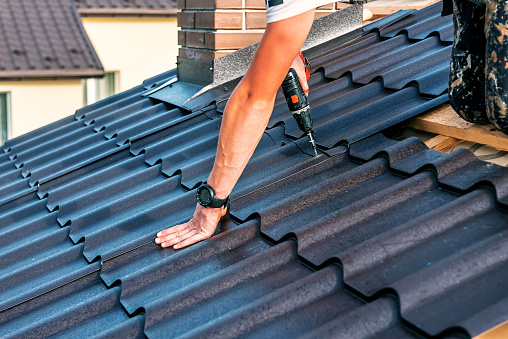
Roofing is a major part of building construction. It protects the inside of a building from rain and snow. The various types of roofs are flat, vaulted, domed, or a combination of these. The type of roof you choose depends on aesthetics, budget, and technical factors. Read on to learn more about different types of roofs. After reading this article, you'll be well-prepared for the next one.
The traditional structure of the roof is usually made from wood. This structure acts as the backbone of the roofing system. However, modern technology has opted for steel structures. Among these structures are c-purlins, battens, and steel beam that run from the ridge of the roof to an external wall. These metal materials provide higher stability and give the overall roofing trusses more shape. A metal roof is more durable than a traditional roof, so it's a good choice for most buildings.
When reroofing, bridging is used. This method of replacing an older roof is often considered more affordable than butting up. It involves tearing off the old roofing, which is usually preferable. Butts are the exposed portions of shingles, sometimes called tabs. In low-sloped roofing, a cant strip is used to break right angles. Another option for reroofing is cap flashing. This prevents water from passing behind the base flashing. Generally, cap flashing is not changed in a reroofing job.
Some homeowners choose to replace the existing roofing with a metal roof. While this type of roof is more expensive than other materials, it is more environmentally friendly. Many manufacturers use at least 25 percent recycled materials in their products. As an added benefit, metal roofs are also one-third of the weight of asphalt shingles and are a perfect platform for eco-conscious initiatives. These are also a great option if you'd like to install a new roof over an old one.
Among the various types of roofs, wooden shingles are attractive, but they're expensive. In addition, they require additional fire retardation. This option may also require fungicide treatments. Additionally, wood shingles are susceptible to drying out, which can cause cracking, warping, and mold. A wooden roof will last a long time if properly installed. But if you're looking for a more eco-friendly option, a metal roof is not a good choice.
Roofing is important for aesthetic design and functionality. There are several kinds of roofs. A flat roof is the easiest to maintain and is the simplest. It is completely flat and has a slight pitch for drainage. This type of roof provides plenty of space for a rooftop patio and an out-of-the-way location for equipment. Unlike a pitched roof, flat roofs require more maintenance and are more prone to water leaks.
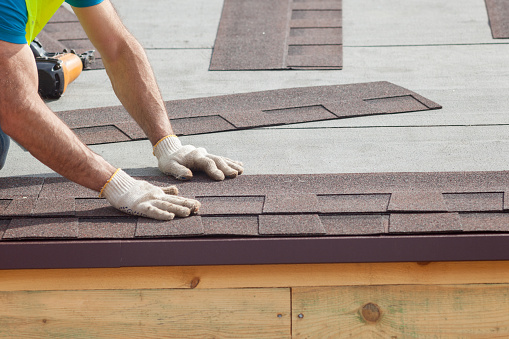
Roofing is the protective covering of a building. Roof forms can vary from flat to pitched, domed to vaulted. The types of roofing materials used and the installation methods they require vary. Building codes are not written as step-by-step instructions for field workers. Manufacturers provide installation guidelines to guide their installers. Depending on the style of roof, manufacturers have different installation instructions. Regardless of what type of roof you have, here are some tips to help you get it right.
The first step in roofing is to measure your roof. You can do this by looking at the area you're going to cover with the shingles. Usually, roofing felt is sold in rolls. The size of the roofing felt you need should be determined by the size of your roof. Divide your total roof area by the square footage of each roll and then add 10% for waste. Once you've calculated how much felt you need, you can begin the process of installing the shingles.
Roofing is a physically demanding task. You'll need to be physically strong and don't be afraid of heights. You should be able to handle carrying a bundle of shingles and a ladder. If you're nervous about heights, try climbing a ladder and carrying a few bundles of shingles. Then, you can move on to other parts of the roof. By taking the time to ensure your roofing project goes smoothly, you'll be proud of your new roof!
Roofing requires physical strength. Be sure you're not afraid of heights. Make sure you don't mind walking on the roof. Afterwards, you can also try climbing a ladder and carrying a bundle of shingles. It doesn't matter if you're not fearful of heights, as long as you're not afraid of falling. If you're not afraid of heights, roofing isn't the best choice.
Roofing installation instructions should be easy to understand. The instructions should include information that's helpful to the installer. Generally, the installation instructions for roofing shingles should be written for the field. Choosing the right type of shingles, for example, should be easy. A roof is a good option if you want your house to look beautiful. It's best to hire a professional with years of experience. It's a good idea to do your homework.
Roofing felt is made up of several layers. The base material is a combination of natural and synthetic materials. The protective coating is bitumen, which repels water and allows the product to breathe. Choosing the right roofing felt will prevent water from leaking and damaging the roof. In addition, roofing felt can help ensure that water is absorbed away from the roof. The final layer of the membrane is the ice and waterproofing. The ice and waterproofing are the two main components of a good roofing installation.
.jpg)
Roofing is the top covering of a building. It consists of the constructions and materials used to create and support it. The roof protects the interiors of a building from sunlight, extreme temperatures, and wind. The roof also serves as part of the building envelope. It should provide a smooth and protected surface. The main purpose of a roof is to keep out weather. It can also be made from various types of materials.
Roofing felt is sold in rolls that are approximately the size of your roof. To find out how much felt you will need, divide your roof area by the area of the felt roll. Make sure to add about 10 percent to the total. Then, cut the extra roofing material. You can then reuse the extra roofing felt. You can even cut it and reuse it on other parts of the building. During this process, you should use a utility knife to trim off the excess shingles.
Roofing felt is available in rolls. The label will tell you how much area it contains. To find the amount you need, divide the roof area by the length of the felt roll. To be safe, make sure to buy a tenth extra roll. In addition, roofing felt should be trimmed so that it doesn't overlap the roof too much. Once you have cut off the excess, run the last row of roofing paper over the top of the roof.
Roofing felt should be cut to the size of the roof. For instance, the length of a roofing felt roll should be twice the length of the roof. Using a utility knife, trim the overhangs that are longer than two feet. Then, cut off the remaining shingles and use them elsewhere. This will help you to save money. This process can take a lot of time, but it is worth it in the long run.
Roofing instructions should be designed for field personnel. Ideally, installation instructions will contain all of the specific information needed for a job. Often, installation instructions will also contain a roof system design. Generally, roofers should leave product selection to the manufacturer. They are usually responsible for selecting the materials and ensuring the best fit. If you don't have a roofing guide, the NRCA recommends contacting a professional and installing the roof.
Roofing instructions should be easy to understand and follow. Ensure reveals are not too small or too wide. Inspecting the roof is important to avoid leaks. Moreover, it's important to understand how to lay a roof properly. In most cases, a shingles' thickness should be measured horizontally, and the height should be standardized to maintain the proper balance. This is to ensure that no underlying structural component becomes damaged.
Member Spotlight
Southern Roofing Systems of Mobile
3416 Windsor Pl Ct
Mobile, AL 36695
251-250-2255
https://southernroofingsystems.com/locations/mobile-roofing-contractors
https://goo.gl/maps/4SSsUczBBHE6mdsM9
Southern Roofing Systems of Mobile is a metal roofing company that specializes in the installation and repair of metal roofing for residential and commercial customers. We strive to provide you with quality customer service to ensure your satisfaction.
Roofing Business Round Up is a community for roofers. Roofing Business Round Up was created to connect master roofers in every state and city together to share connections, resources, and information for a better, higher quality industry.